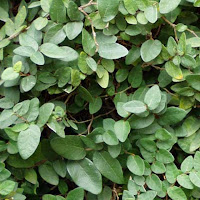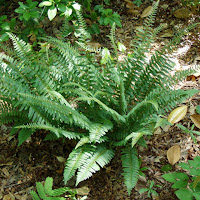Plants for those spaces
Indoor plants are wonderful. Houseplants brighten any room, add a little color, clean the air, and lend a touch of elegance. What’s not to love? Wouldn’t it be great, though, if you could move them about from indoors to the outdoors, and back again any time of year? You could enjoy a little variety in your décor, and freshen the look of your garden at will.
Unfortunately, most of those sold as indoor plants are native to the tropics, or their ancestors were. They’re simply not suited to growing outdoors in temperate climates. There are, however, very many species that thrive indoors, and are hardy enough to be moved outdoors to the garden, patio or deck. Here are a few to consider:
Carex ‘Bunny Blue®’
Carex laxiculmis 'Hobb – Bunny Blue® Sedge – is native to Eastern North America. Foliage is evergreen when grown indoors, outdoors in warmer climates and semi-evergreen in the northern states. This beauty has graceful, arching blue-green to blue-gray foliage, 1/2" wide, 12"-14" long. Carex Bunny Blue® grows in clumps and spreads slowly to 12"-15" across. Flowers are yellow but insignificant, and appear in late Spring. Bunny Blue® will grow in average potting soil, with adequate irrigation, but really thrives in moist to wet soil. You can’t over-water it! Grow it outdoors in USDA climate zones 5-9.
Creeping Fig
Creeping Fig – Ficus pumila – is an elegant vine that excels in container gardens, hanging baskets, and topiaries. Evergreen foliage makes it a lovely subject year around. Creeping Fig is hardy in USDA climate zones 8-11.
Christmas Fern
Christmas Fern – Polystichum acrosticoides – is a native, evergreen beauty that brightens the winter landscape with its glossy deep green fronds. For generations fronds were cut and gathered in winter to decorate the home for Thanksgiving and Christmas. Christmas Fern thrives when grown indoors in potting soil with adequate watering, so you can decorate your home for the holidays any time of year. Grow it outdoors in USDA climate zones 3-9.
Ivalace Ivy
Hedera helix ‘Ivalace’! With its curly leaves and compact habit, the American Ivy Society gave it the 2011 Ivy of The Year Award. Despite its beautiful appearance, it's tough. It's great as an indoor houseplant, useful in container gardens, topiaries, and even as a ground cover for small areas outdoors. It’s hardy in USDA climate zones 5-10. If you want an ivy with more vigor, any of the other varieties of Hedera will perform well indoors and out.
Lily-of-the-Valley
Lily-Of-The-Valley – Convallaria majalis – is very easy to grow from bare-root rhizome divisions. Fragrant, bell-shaped flowers perfume the indoors. It is effective in container gardens, fragrance gardens, and naturalized outdoors in shade gardens and woodland settings. When the outdoor site is to its liking, Lily-Of-The-Valley spreads rapidly. Lily-of-the-Valley is hardy outdoors in USDA climate zones 4-8.
Liriope
Oh, my! There are so many varieties of Liriope muscari to choose from. I prefer the ones with deep green foliage and larger flower spikes for indoor gardens. Those with variegated foliage sometimes lose their color contrast in shady areas. Liriope graces the home with tall, blade-like leaves, adding some height and a nice texture to containers of mixed species. Liriope is generally hardy in USDA climate zones 5-11.
Mondo
My favorite mondo for container gardens is Ophiopogon japonicus ‘Nana’, or Dwarf Mondo. Short, evergreen blades have the appearance of turf-grass. It thrives in shade. It’s sometimes used as a bonsai subject, or in containers with larger specimens. Mondo is hardy outdoors in USDA climate zones 6-10.
Return to GoGardenNow.com.
Return to GoGardenNow.com.













No comments:
Post a Comment